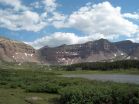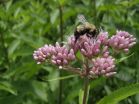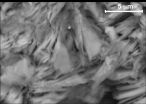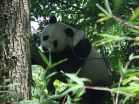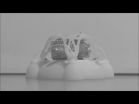Towards an HIV vaccine
Selecting promising broadly neutralizing antibodies that can inhibit a range of viral strains
2015-07-09
(Press-News.org) Neutralizing antibodies (Nabs) are immune proteins that recognize, bind to, and trigger the elimination of virus before it can establish a chronic infection. How to elicit a potent Nab response capable of protecting against different HIV subtypes and against different modes of infection is critical to the development of an AIDS vaccine. Two studies published on July 9th in PLOS Pathogens provide results on Nabs that could help guide vaccine design. One shows what type of Nab "repertoire" can be generated following superinfection, and the second one examines the efficacy of Nabs in blocking direct cell-to-cell transmission of HIV.
Julie Overbaugh, from the Fred Hutchinson Cancer Research Center in Seattle, USA, and colleagues characterized the antibodies generated in 21 women who were superinfected, that is, infected sequentially at least twice with HIV by different sexual partners. Their study--the first to examine Nab specificities in a cohort of superinfected individuals, suggests that exposure to diverse HIV subtypes following superinfection may drive a broad and potent Nab response that might be mediated at least in part by polyclonal antibodies targeting multiple different epitopes, or antigenic targets found on the virus.
"As eliciting a highly diverse immune response may be favorable to providing protection against incredibly diverse HIV-1 variants in global circulation", the researchers conclude that their study "supports further investigations of the molecular and functional characteristics of the virus-antibody interplay in superinfected individuals, as superinfection may provide insight to the development of a diverse Nab response with multiple epitope specificities."
Besides infection with free virus, HIV can be transmitted also by direct cell-to-cell contact. And even though the latter is thought to provide a more difficult challenge for neutralizing antibodies, most of the studies so far have examined the antibodies in the context of free virus infections. To be able to address this gap, Alexandra Trkola, from the University of Zurich, Switzerland, and colleagues first developed an assay that can specifically test the ability and potency of Nabs to prevent direct cell transmission of HIV. Proving this point is tricky because free virus infection occurs normally together with cell-to-cell transmission. By establishing an assay system where free virus infection is restricted and infection can only occur through cell-cell transmission, the researchers could then test whether a large selection of Nabs could prevent cell-to-cell transmission of different HIV strains.
They found that while Nabs showed an overall decreased activity during cell-cell transmission, losses varied substantially depending on the antibody and the virus strain examined. A few Nabs retained activity during cell-cell transmission for individual viruses; surprisingly, this was generally not associated with a high potency against free virus infection. Neutralization of free virus, but not cell-cell transmission, was linked with the activity of specific Nabs to inhibit prior to the binding of the virus to the CD4 receptor on T cells, highlighting the functional differences of the two processes.
Using mathematical analysis, the researchers showed that cell-cell transmission was substantially more prone to give rise to virus mutants that can escape immune control than free virus transmission and conclude that "this highlights the importance of controlling virus replication via the cell-cell transmission pathway even if the contribution of this transmission mode should prove to occur to a lesser extent than free virus spread in infected individuals." They go on to say that "since no single broadly neutralizing antibody combines the entire range of mechanistic features anticipated to support in vivo efficacy, our study adds further evidence that combinations of such antibodies need to be considered for human application."
INFORMATION:
Contact:
Julie Overbaugh
e-mail: joverbau@fhcrc.org
phone: +1.206.667.3524
Alexandra Trkola
e-mail: trkola.alexandra@virology.uzh.ch
phone: +41.44.634.5380
Please use this URL to provide readers access to the paper (Link goes live upon article publication):
Overbaugh: http://dx.plos.org/10.1371/journal.ppat.1004973
Trkola: http://dx.plos.org/10.1371/journal.ppat.1004966
Related Image for Press Use:
Trkola: https://www.plos.org/wp-content/uploads/2013/05/Trkola_JUL_9.jpg
Credit: Trkola et al, CC-BY
Author Affiliations:
Overbaugh authors:
University of Washington, USA
Fred Hutchinson Cancer Research Center, USA
NIH, USA
Trkola authors:
University of Zürich, Switzerland
Please contact plospathogens@plos.org if you would like more information.
ELSE PRESS RELEASES FROM THIS DATE:
2015-07-09
SALT LAKE CITY, July 9, 2015 - More than a quarter of the rain and snow that falls on continents reaches the oceans as runoff. Now a new study helps show where the rest goes: two-thirds of the remaining water is released by plants, more than a quarter lands on leaves and evaporates and what's left evaporates from soil and from lakes, rivers and streams.
"The question is, when rain falls on the landscape, where does it go?" says University of Utah geochemist Gabe Bowen, senior author of the study published today in the journal Science. "The water on the continents sustains ...
2015-07-09
Global warming is putting the squeeze on bumblebees. In the most comprehensive study ever conducted of the impacts of climate change on critical pollinators, scientists have discovered that global warming is rapidly shrinking the area where these bees are found in both North America and Europe.
Researchers examined more than 420,000 historical and current records of many species of bumblebees--and confirm that bumblebees are in steep decline at a continental scale because of climate change. The new research is reported in the journal Science.
ECONOMIC THREATS
This ...
2015-07-09
The discovery of a fiber-reinforced, concrete-like rock formed in the depths of a dormant supervolcano could help explain the unusual ground swelling that led to the evacuation of an Italian port city and inspire durable building materials in the future, Stanford scientists say.
The "natural concrete" at the Campi Flegrei volcano is similar to Roman concrete, a legendary compound invented by the Romans and used to construct the Pantheon, the Coliseum, and ancient shipping ports throughout the Mediterranean.
"This implies the existence of a natural process in the subsurface ...
2015-07-09
Researchers from the University of Calgary and University of Ottawa have made an astonishing find when it comes to the habitat range of bumble bees, and the results are troubling.
Findings to be published in the Journal Science, demonstrate that climate change is having a significant impact on bumblebee species in North America and Europe.
Bumblebees are losing vital habitat in the southern regions of North America and Europe, which is cause for concern but another pressing issue is that bumblebee species generally haven't expanded north," explains Paul Galpern, Assistant ...
2015-07-09
TORONTO, July 9, 2015 - Bumblebees are rapidly declining in both North America and Europe, and a new study points to climate change as the major factor. The study, a comprehensive analysis of how climate change impacts these critical pollinators, was published in Science today.
The research shows that bumblebees are losing large amounts of the southern portion of their ranges, but unlike other species which are compensating by moving further north as the climate warms, bumblebees are not heading north. Their range areas are compressing with rapid warming and this is causing ...
2015-07-09
This news release is available in Japanese.
A suite of energy-saving traits, including underactive thyroid glands, allows giant panda bears to survive almost exclusively on bamboo, according to a new study. Yonggang Nie and colleagues report the first measurements of daily energy expenditure (DEE) in these bears, which do not have stomachs designed for such low-nutrient, high-cellulose plants. The researchers studied five captive pandas and three wild ones, discovering that the animal's DEE was just about 38% of the average for a terrestrial mammal with ...
2015-07-09
This news release is available in Japanese. How does the Campi Flegrei caldera, or subsurface rock, near Naples, Italy, withstand more uplift than other calderas without erupting? A new study shows that the caprock underlying this particular caldera closely resembles ancient Roman concrete -- and that the rock's microstructures, characterized by intertwining fibrous minerals, lead to its exceptionally high strength. The findings help to explain how the caldera has been able to withstand tremendous deformation, such as the large uplift episode that began in 1982 and raised ...
2015-07-09
This news release is available in Japanese.
While the geographic ranges of many animals are expanding northward in response to climate change, those of North American and European bumblebee species are shrinking, a new study shows. These insects are failing to migrate northward, the study reveals, and in their southern territories, their ranges are compressing -- with range losses up to 300 kilometers in both North America and Europe. The findings reveal the vulnerability of these pollinators, which play key roles in agriculture, to a warming world, hinting that they ...
2015-07-09
This news release is available in Japanese.
Researchers have designed a more efficient jumping robot with three-dimensional (3D) printing techniques and a combination of hard and soft materials. Inspired by designs in nature, such as snakes or insect larvae, soft-bodied robots are safer, more adaptable, and more resilient than their traditionally rigid counterparts, but molding and powering them has proved challenging. Now, Nicholas Bartlett and colleagues report a technique for designing and manufacturing untethered, frog-like jumping machines with ...
2015-07-09
Traditional industrial robots are rigid -- mostly metal -- and are fast, precise and powerful. Their speed and precision comes at the cost of complexity and can often pose a danger to humans who get too close. Soft robots are adaptable and resilient but slow, difficult to fabricate, and challenging to make autonomous because most motors, pumps, batteries, sensors, and microcontrollers are rigid.
But what if you could combine the autonomy and speed of a rigid robot with the adaptability and resiliency of a soft robot -- and do it relatively cheap and fast?
Harvard engineers ...
LAST 30 PRESS RELEASES:
[Press-News.org] Towards an HIV vaccine
Selecting promising broadly neutralizing antibodies that can inhibit a range of viral strains
